It’s bound to happen.
You’re eating healthy, diligently watching your carbs, and even managing to make it to the gym a few times a week. And you haven’t cheated in weeks.
You’re working SO hard, yet the scale isn’t going down. It’s been weeks now, and you’re still stuck at the exact same weight.
So what gives?
Are you ready to lose weight and heal your body for life (without dieting, drugs, or making yourself miserable)?

Our free on-demand video training will walk you through how to make this THE year you set health goals…and keep them.
The truth is that when trying to lose weight, there are few things more frustrating than hitting a weight-loss plateau, especially when you feel like you’re doing everything right. In fact, this feeling can sometimes be enough to derail you from all your hard work.
But don’t give up yet! The good news is that there are some proven ways to bust through this (very temporary) place. But before we talk through the solution, let’s make sure you’ve actually hit a plateau.

What Exactly Is A Weight Loss Plateau?
So what exactly is a weight loss plateau? In short, it’s when your weight loss comes to a screeching halt for an extended period of time—at least two to three weeks or more—and only after you’ve actually become Thin Adapted.
If you are currently following our Phase One program outlined in the 28 Day Metabolism Reset—also known as the ACCLIMATE phase—your body will still be adjusting to this new way of eating. And while most people do lose weight during this phase, it’s more about resetting your metabolism and changing the way your body burns fuel, from using carbohydrates as its primary energy source to burning fat for energy.
Phase 1 typically lasts for 4-6 weeks, and during this time you can expect to experience some fluctuations in your weight as your body adjusts.
Remember that a day or two of zero movement on the scale is not actually a weight loss plateau. Weight loss never happens in a perfectly straight line, and you will likely experience fluctuations along the way. This is normal. Some days may be a little up, and some may be a little down, but you should see a trend downwards over time.
So how do you know if what you are experiencing is a normal part of the weight loss journey, or if you’ve actually hit a weight-loss plateau?
Signs Of A Weight Loss Plateau
There are multiple signs that you are struggling with a weight loss plateau. You’ll begin to notice more than just the scale being stuck between the same numbers.
If you notice any of the following physical or emotional changes, you might be stuck in the middle of a plateau.
You’re Extra Tired
It’s normal to feel tired and sluggish for the first few weeks of Phase 1, as your body is adjusting to this new way of eating. If you previously ate a diet high in sugar and refined carbohydrates, your body will also likely be detoxing, which can seriously deplete your energy.
But if after 4-6 weeks you’re still fighting feelings of lethargy or tiredness and haven’t yet experienced the energy boost everyone else seems to be talking about, this might be a signal that you need to make some changes.
You’re Not Losing Weight
Not dropping pounds, even though you are still eating and exercising the same, is a pretty obvious sign that you’re in the middle of a weight loss plateau. We define a weight loss plateau as going at least 2-3 weeks without losing any weight, even when you are doing everything right.
Your body is constantly striving for homeostasis or a feeling of “ok, this is good enough.” Your activity level, genetics, and current diet/caloric intake all affect that point where your body will resist losing more weight. When you stop losing weight, your body is hitting that spot it thinks you should stay in, even if you know that isn’t a healthy weight yet.
You’re Moody
If you find yourself feeling more irritable or short-tempered than usual, this might be another signal that something isn’t quite right. Oftentimes when we aren’t seeing the results we want, our emotions can get the better of us.
We become more frustrated, anxious, and stressed about the weight loss journey, which only exacerbates the situation. If you find yourself feeling down more often than not, it might be time to take a step back and reassess your goals.
Your Cravings are Back in Full Force
If you’ve been doing well for weeks or even months and suddenly find yourself struggling with intense cravings, this could indicate that you’ve hit a weight loss plateau.
Your body is very good at adapting, and when it’s not seeing the results it wants, it will start to push back. Cravings are one way your body does that.
If you find yourself regularly giving in to cravings, it might be time to take a look at your diet and see where you can make some adjustments.
Why Do Weight-Loss Plateaus Happen?
Well, there are two big reasons why you might hit a weight-loss plateau.
First, your body thinks it’s starving. Weight-loss plateau happens because while your mind might be focused on losing weight, your body is focused on maintaining weight.
Your body is rather resistant to weight loss because there’s a set point at which your body thinks it’s at its ideal weight, which is determined by a number of factors:
- Your current weight
- Current diet / caloric intake
- Activity level
- Genetics
When you begin losing weight, even with a healthy diet, your body still perceives that as starvation and begins the process of conserving energy and weight. Your body will produce regulatory hormones that increase hunger and make you feel less full in the hopes you’ll keep eating to maintain your current metabolic level.
Second, as your body gets used to your activity level, it becomes more efficient.
Let’s say you start jogging, and a typical jog burns 200 calories. At some point your body will adapt to this level of activity and will become more efficient. Now, instead of burning 200 calories, you’re only burning say 100, for the same level of activity.
Your body will constantly adapt to changes in exercise and levels of activity, which means it’s good to switch things up or increase your activity overall.
What You Can Do To Break Through A Weight Loss Plateau
So with all that in mind what can you actually do to break through a REAL weight loss plateau and get your body burning fat once again? Here are a few steps we recommend.
Step 1: Make Sure You’re Actually Thin Adapted
Our Phase 1 Program—the 28 Day Metabolism Reset—is designed to help you change the way your body burns fuel in order to become what we call Thin Adapted. Essentially becoming Thin Adapted happens when your body switches its DEFAULT energy-burning system from burning carbohydrates to burning fat. This will only happen after a prolonged period of ketosis—typically around 4 weeks, but sometimes as long as 6-8 weeks, especially if you are dealing with a high level of insulin resistance.
So how do you know your body is Thin Adapted? Well, mostly because once your body has become fully Thin Adapted, a number of different positive changes will occur.
First, you will likely experience a significant increase in sustained energy throughout the day. Because your body is now relying on FAT rather than carbs, and because you have a nearly unlimited amount of fat available to burn in your body, you suddenly have a constant source of fuel to energize your body, regardless of whether you have eaten recently. That means no more afternoon slumps or coming home from work feeling utterly spent. It’s amazing!
Second, once you have become fully Thin Adapted, you’ll likely find that you are very rarely hungry. Again, because your body is already burning your stored fat, you simply won’t need to eat as often or as much as before. You’ll feel satisfied most of the time, without even trying.
If you haven’t noticed these changes yet, then it’s possible your body hasn’t quite made the switch. If that’s the case, then there may be a few different things that could be going on, and it’s important to rule these out before moving on to step two:
- You’re not eating enough fat
This is by far the most common mistake people make when starting a low-carb eating plan. They are so afraid of eating fat that they end up not eating enough of it, and as a result, they don’t get the results that they want. Remember, we need fat for fuel, so if you’re not eating enough of it, your body is going to have a hard time getting into ketosis.
- You’re eating too many sweeteners & processed snacks
Just because a food is “low carb” doesn’t mean that it’s going to help you get into ketosis. In fact, many of the processed, “low carb” snacks and desserts are actually loaded with sugar alcohol, and other ingredients that can actually kick you out of ketosis. So if you’re struggling to get into ketosis, take a look at your snacks and desserts, and see if they might be the culprit.
- You’re eating more carbohydrates than you realize
This is a common issue, especially when people are first starting out. It’s easy to underestimate the number of carbohydrates in the foods that we eat, so it’s important to be vigilant and make sure that you’re reading labels and keeping track of your carb intake.
- You’re not getting enough sleep
Sleep is so important for overall health and well-being, but it’s also important for getting into and staying in ketosis. This is because when we sleep, our bodies can repair and heal from the damage we’ve done during the day. If you’re not getting enough sleep, your body is going to have a hard time getting into ketosis.
Of course, even once you ARE Thin Adapted, weight loss plateaus can still occur. And that may mean switching things up a little more to help your body get unstuck and start burning fat once again.
Step 2: Increase Your Fasting Window
Intermittent fasting is simply a way of scheduling your meals in a way that you are only eating during certain hours of the day and then fasting for the rest. For example, you might eat all of your meals between the hours of 12 pm and 8 pm, or, if you prefer to eat earlier, maybe between 10 am and 6 pm. It doesn’t actually matter; the point is simply to stretch out the amount of time in between meals in order to give your body more time to burn fat.
One of the most effective things you can do to increase your insulin sensitivity is give your body more time between meals. Your goal is for your hormones to begin telling your body that it is time to burn fat rather than store it. And the way you do that is by fasting more often!
Intermittent fasting is especially effective in Phase Two because your body is now much more metabolically flexible and much more accustomed to relying on fat for energy. That means fasting will get easier and easier—sometimes, you won’t even have to really think about it. It will just become a part of your day!

Step 3: Add HIIT And Strength Training Workouts To Burn Fat
High Intensity Interval Training is a great way to torch fat, and it’s something you can do even if you don’t have a lot of time. Basically, HIIT means alternating short bursts of all-out effort with periods of active recovery. So, for example, you might sprint for 30 seconds, then jog or walk for 60 seconds. You can do this with cardio: running, biking, rowing, elliptical, etc.
HIIT is great because it’s very efficient—you can get a great workout in a short amount of time, and it continues to burn calories even after you’re done working out. In fact, one study showed that HIIT could burn up to 50% more calories than traditional, steady-state cardio.
Another great way to help you lose weight is to strength train. When you strength train, you not only burn calories during your workout but also continue to burn more calories for hours afterward. In fact, one study showed that people who strength trained burned an average of 100 more calories per day than those who didn’t.
But the biggest reason to strength train is that when you strength train, you also build muscle and lean muscle mass. And the more lean muscle you have, the more able your body is to fight insulin resistance, and the higher your metabolism will be. So it’s a great way to not only help with weight loss, but also to increase your resting metabolic rate so that you continue to burn fat more efficiently throughout the day.
Step 4: Break A Weight Loss Plateau With Protein Fast Days
A PFD is a day where you eat almost nothing but protein and just enough fat to allow your body to process your fat-soluble vitamins A, D, E, and K—somewhere between 30 and 50 grams. On a PFD, your carbs will be super low, and your calories will also be low—it’s the one day we actually pay attention to calories and try to keep it below 1000 calories for the day.
Basically, it’s like doing a one-day fast, but you still get to eat. And unlike water-only fasting, which has some benefits but can lead to a loss of lean mass, with a protein fast, you spare your muscles and retain your lean muscle mass. This is why this method is also sometimes called a Protein Sparing Modified Fast.
PFDs are most effective when done once or twice a week, and can be a great way to break through weight loss plateaus, but only once you’ve reached Phase 2.
To do a PFD, choose one day (or two) per week where you will eat nothing but protein—just steak, chicken, pork, fish, or eggs. Your goal is to get to at least 120 grams of protein for the day, while still keeping your calories low. You can cook your meat in fat like you normally would, but avoid extra fat and all carbs.
- What to eat on protein fast days
When you do a PFD, you basically want to eat mostly lean protein with a small amount of healthy fat. Try to eat almost no carbs, if possible.
Here are some types of food you can eat on a PFD. Remember, they need to be plain, non-breaded versions of the following protein sources.
- Beef
- Chicken
- Turkey
- Venison
- Fish
- Shellfish
- Egg Whites
- Bone Broth
- Collagen Protein added to Beverages or Broth
If you skip the veggies and use less marinade, you can eat the following Thinlicious™ recipes on a PFD:
- Food to avoid on protein fast days
The easy answer is: avoid anything that isn’t meat, seafood, or egg whites. Let’s break it down into a list.
Avoid these types of food on a PFD:
- All veggies
- Fruits and berries
- Beans and legumes
- Condiments with added sugar
- Nuts and seeds
- Dairy (including cheese)
- Whole eggs (you can eat the egg whites only)
- All grains
- Alcohol
- How often to do a PFD on weight loss plateau
When you are trying to break a weight loss plateau, you should do 3-4 PFDs each week. Repeat this pattern until you begin losing weight again.
Alternate PFDs with regular Phase 2 days. On those Phase 2 days, follow your macro recommendations.
- How PFDs break weight loss plateaus
It’s important to understand how PFDs work to trust the process as you go through it.
Essentially, our bodies naturally break down and use food for energy. When you do a PFD, your body enters a “fasted state.” In this state, your body doesn’t have food to use for energy, so it breaks down stored fat instead.
This fasted state is essential to putting your body into a fat-burning state. Fasting with lean protein helps you preserve lean muscle mass, which makes your metabolism run more efficiently.

Final Thoughts
Remember, weight loss is never easy but it is always worth it. Be patient with yourself, trust the process, and don’t give up! The goal is to live a healthier, happier life—one step at a time.
And if you’re ready to discover a way of eating that helps you lose weight without deprivation, then be sure to check out our 28-Day Metabolism Reset. It’s the perfect way to begin retraining your body to start working for you, and not against you. You’ll lose weight, feel more energized, and take control of your cravings once and for all. Click here to learn more!
Do you have any other tips for breaking through a weight-loss plateau? Share them with us in the comments below!
PIN FOR LATER
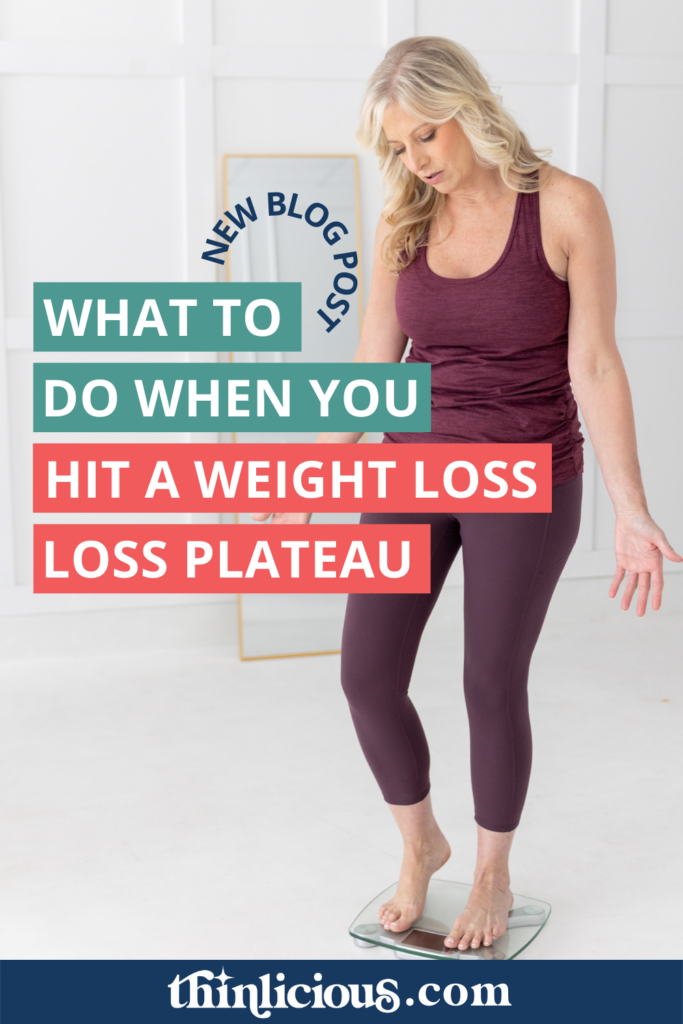
Get our FREE guide to finally fix your metabolism!
Losing weight & getting healthy is never easy, but lately you might feel like it’s suddenly become impossible.
Our Flip the Switch guide will help you clearly understand what’s been going on, as well as exactly what you can do to get your metabolism working again so that you can look and feel your best—it’s easier and more simple than you think!
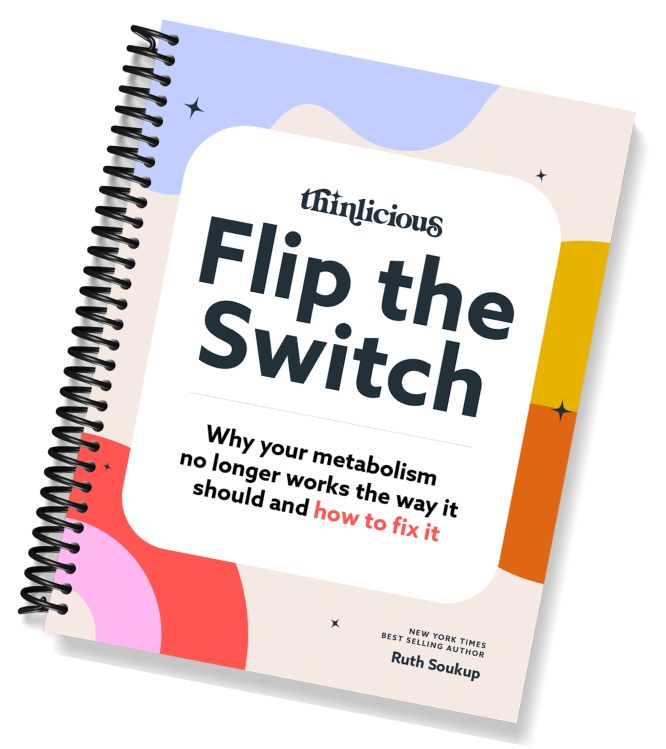





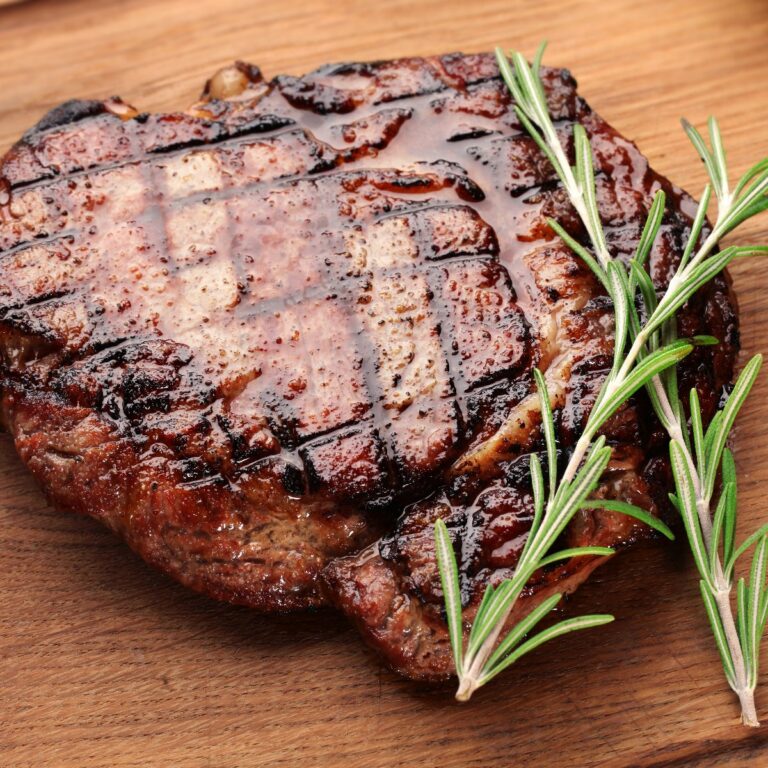

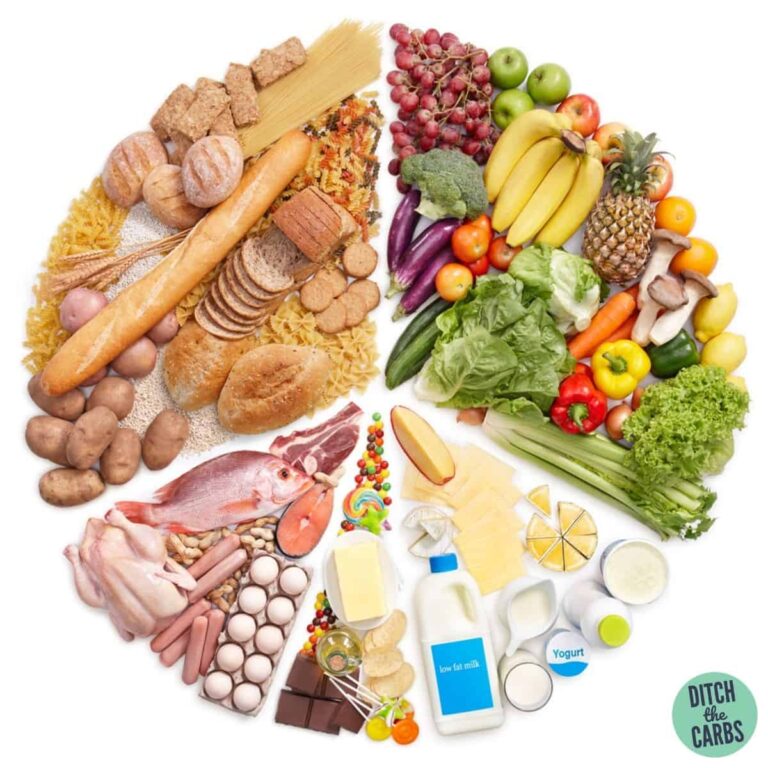
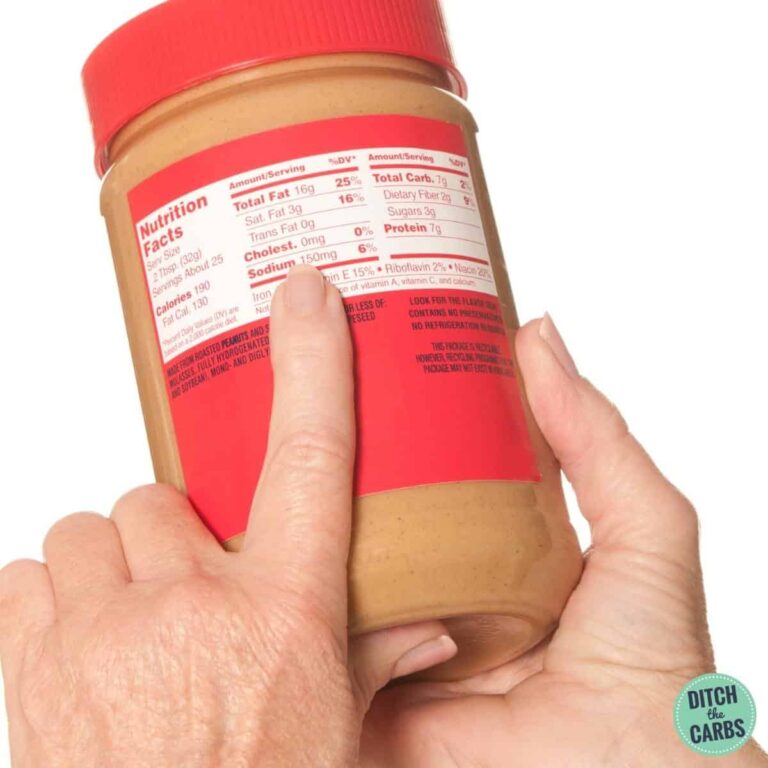


3 Comments